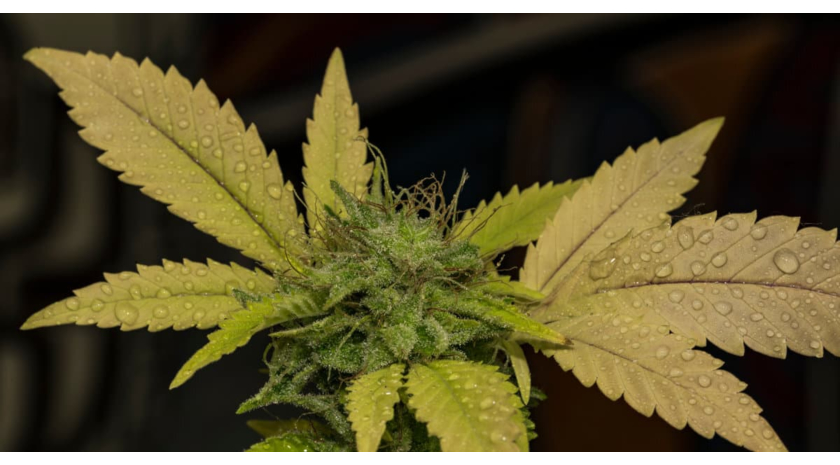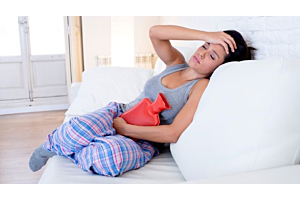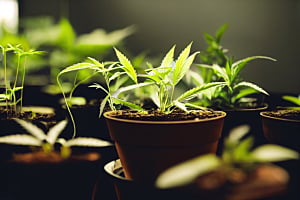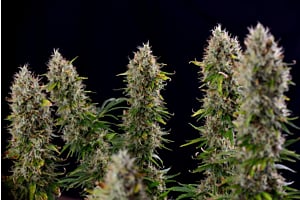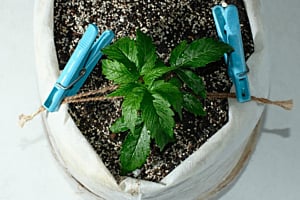Growing weed is an enjoyable journey. It’s easy to raise plants, and reaping the juicy and dense buds at the end is the best part. Sometimes, we get faced with challenges along the way, though. A cannabis nitrogen deficiency is one of the most common among cultivators of all levels.
Nitrogen plays an essential role in gardens and aids plant growth. A lack of this nutrient significantly impacts cannabis health and impedes your final harvest. Spotting the issue and acting fast increases your chances of a positive outcome.
What can you do to help your crop? Can you avoid a nitrogen deficiency in weed?
We’re here to answer those questions. Discover how to spot the issue, resolve it, and stop nitrogen deficiency in cannabis from happening altogether.
Let’s begin.
The importance of nitrogen
Nitrogen (N) is one of the most important nutrients your cannabis crops need, making nitrogen deficiency in weed plants a huge issue. It’s one of the “big three”—the macronutrients your marijuana can’t live without—along with phosphorus and potassium.
The nute plays a vital role in chlorophyll production—the green pigment in leaves. Chlorophyll is essential for photosynthesis, which is how plants get the energy they need from the sun to survive. Nitrogen is also a crucial component of the amino acids within your crop. These are the building blocks of protein and promote healthy growth in your cannabis garden. Nucleic acids also rely on N to build the plant’s DNA, which they need to develop and reproduce.
Your weed garden won’t survive without the presence of the nutrient for these roles. A cannabis nitrogen deficiency means these processes won’t work properly, and it can quickly affect the overall health of your crops.
Nitrogen deficiency colors and symptoms
Nitrogen deficiency in cannabis plants shows itself in a few ways and is easy to detect—luckily. The major sign of this marijuana nutrient deficiency is yellowing leaves. Keep your eyes on the older foliage around the lower levels of your crop. If plants lack this nute, the leaves turn yellow, wilt, and eventually drop off.
Why?
The younger leaves at the top of the plant steal nitrogen from the older ones. Your crops prioritize the higher foliage as they get the lightest area and aid more in photosynthesis. This is normal during flowering but is a big warning sign during the vegetative stage.
You know you’re dealing with a major cannabis nitrogen deficiency when leaves start to drop rapidly during vegging. If the yellowing starts climbing up the plants, they lack this micronutrient, and you need to act fast to remedy the problem.
How to fix nitrogen deficiency?
You’ve identified the issue in time and want to take action. Knowing how to fix nitrogen deficiency in plants helps get them back on track to produce a decent yield. Below, we share a few ways to recover from this nute deficiency.
Growth fertilizer
The best and fastest way to overcome a weed nitrogen deficiency is to use a water-soluble growth fertilizer. This method ensures the nutrient goes straight to the roots, where the crops absorb it quickly. Within a few days, leaves should return to their normal color. You can buy fertilizers from your local garden center—all plant foods contain nitrogen. Choose from mineral or organic options, depending on your preferences.
An organic fertilizer rejuvenates the soil with plenty of nutrients. Mineral options contain certain chemical elements that plants absorb quicker. The latter is also cheaper—ideal for growers on a budget. To rid crops of nitrogen deficiency in weed, mix the fertilizer with water according to the instructions on the packaging. Apply it directly to the soil at the base of your plants, where it works the fastest.
Worm castings
One of the best organic fertilizers to recover from nitrogen deficiency in cannabis plants is worm castings. This crop food is made from earthworm droppings, full of organic material from the soil. This is a fantastic option for novice gardeners and is very reliable. Worm castings include more elements than any other natural product that encourage your plants to grow. The best way to administer this fertilizer is by making a worm tea.
How to make a worm tea
Feeding your plants worm tea is an excellent way to combat a cannabis nitrogen deficiency and is 100% organic. Use our step-by-step instructions below to make your own. It’s a must in any marijuana garden!
- Fill a bucket with water and let it sit without a lid for 24 hours minimum. This eliminates chlorine and other elements and substances you don’t want.
- Find something porous, like an old t-shirt, sock, or pillowcase.
- Add 3 or 4 tablespoons of worm castings inside your porous fabric for every liter of water in the bucket. Tie knots to stop the contents from leaking.
- Place the castings in your clean bucket of water and let them sit there for 2–3 days.
- You know the worm tea is ready when the water turns dark brown.
To use the tea and rid plants of nitrogen deficiency in cannabis, water the crops and the soil around them. Before long, your marijuana will return to its healthy color, thanks to the nutritional benefits of the worm castings.
Pro tip: Strain the mixture and add it to a spray for foliar application.
Soil pH levels
Sometimes, the soil may contain sufficient N levels, but plants still display symptoms of a cannabis nitrogen deficiency. This is usually the result of too low pH levels in the root zone. When the pH isn’t right, plants can’t absorb enough nutes and begin to suffer.
Fix this issue by buying good soil for growing plants, monitoring its pH and adjusting the levels. The best way to check whether it’s too low or high is by collecting 1–3 teaspoons of earth and adding it to a clean glass. Pour distilled water over the soil and shake the mixture. Let it rest for 30 minutes. With a coffee filter, drain the sample into a clean container. Dip a pH test strip into the liquid and compare the color to the card included with the kit. You get the best readings by performing the process in a few different spots.
The pH in your soil should be 5.8–6.2. Plants can survive with anything between 5 and 7, but anything outside the optimal levels limits growth.
If readings are too low, add a material containing lime. If the number’s too high, elemental sulfur, aluminum sulfate, or sulfuric acid can lower the levels. With the right pH, you can avoid a cannabis nitrogen deficiency altogether.
How to prevent nitrogen deficiency in cannabis?
If fixing a cannabis nitrogen deficiency sounds like too much work, you can try your best to avoid the situation in the first place. It’s sometimes out of your control, but implement the following for the most success:
- Provide your cannabis plants with the right nutrients at every growth stage. This means more N in the vegetative phase and less as you enter flowering.
- Check pH levels consistently and adjust any changes quickly.
- Research the strain you’re growing and only water when necessary. Overwatering could cause you to flush out essential nutes, including nitrogen.

What is nitrogen toxicity in weed?
If you’re new to growing cannabis, you might be tempted to overload your crop with nutrients at the sign of a deficiency. Stop right there. You might cause the pendulum to swing the other way and cause nitrogen toxicity in weed.
Cannabis nitrogen toxicity means you have too much of the nute. This can cause issues for your crops, especially during the flowering stage when growers usually lower N levels. Expect to see shiny, dark green leaves, weak stems, and generally slow development with excess nitrogen levels. Foliage turns downward, resulting in a claw-like appearance. Buds don’t form correctly, and you risk reducing the final yield and nug potency.
How to fix nitrogen toxicity?
Flush your crops with pH-neutral water to expel all excess nutrients. Reduce the amount of plant food you administer or use a mix specific to the flowering phase—if you’re at that stage. Damaged leaves don’t usually recover, but you should see positive signs in new growth.
Maintain nitrogen levels for healthy plants
There’s no doubt nitrogen deficiency in weed can be detrimental to your plants and the final harvest. Armed with the information above, you can spot the issue and act fast.
Use our helpful tips to remedy the situation and enjoy an abundant harvest as a reward for your efforts. Maintain optimal N levels and raising your crops is easy.
Not sure where to start your cannabis growing journey? Check out the Seed Supreme online store and pick up a pack of top-tier seeds. Stay up-to-date with the latest tips and tricks with our blog and enjoy additional cultivation advice from industry experts.

 THC
THC